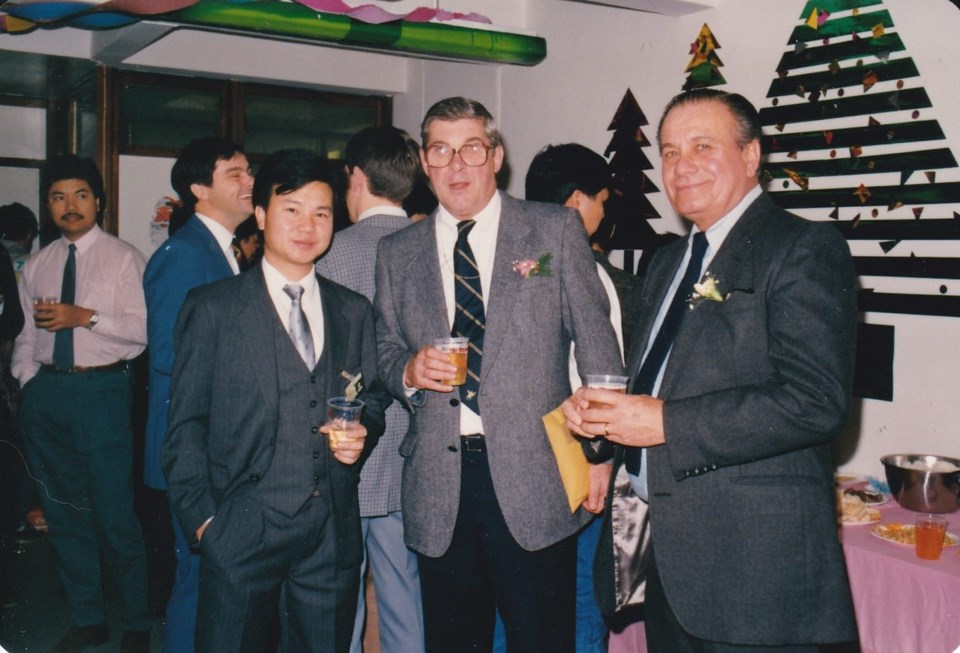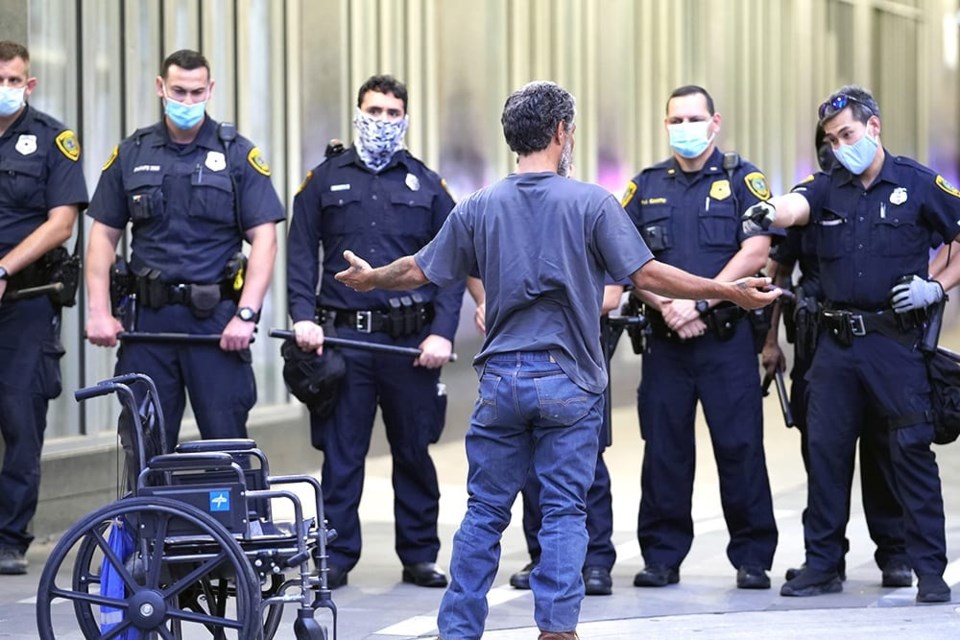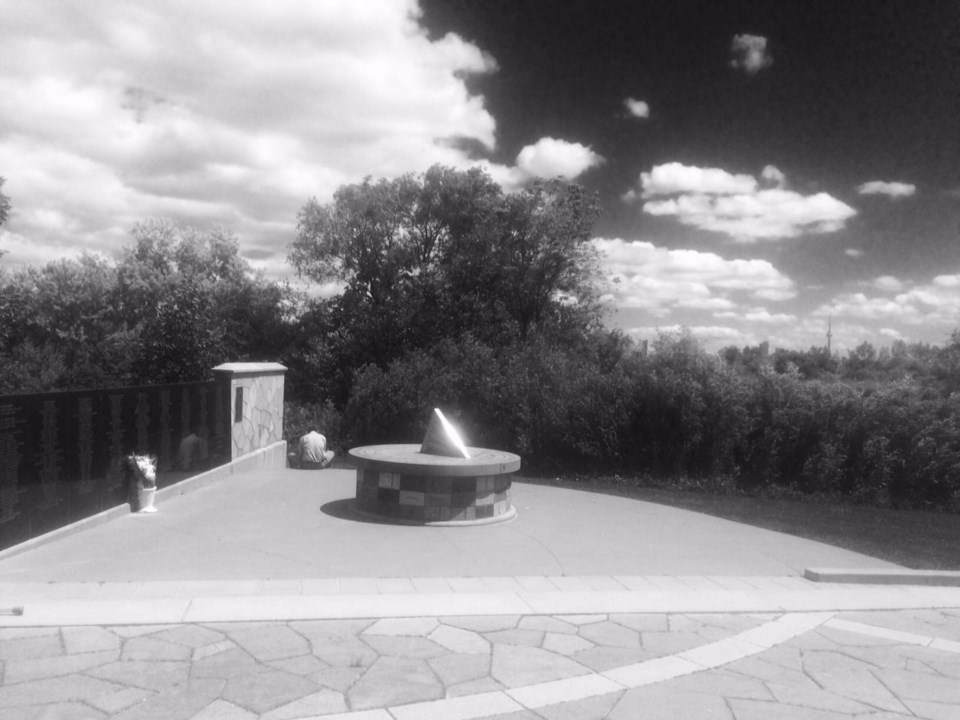Bombings haunted Fonthill man—and his family—for decades
Thirty-five years ago this Tuesday, on June 23, 1985, a bomb in a suitcase exploded in a cargo area at Narita International Airport, outside Tokyo. The blast effectively cut one of two Japanese luggage handlers in half at his torso, and killed both instantly. Fifty-five minutes later, almost 10,000 kilometres away, a second bomb went off, this one in the cargo hold of an Air India Boeing 747, flying off the coast of Ireland. The explosive decompression of the aircraft at an altitude of 31,000 feet completely tore off some passengers’ clothes. The plane broke apart in stages, with the wreckage plummeting into the Atlantic Ocean.
All 329 people on board were killed. The cause of death for 26 passengers was attributed to hypoxia, while at least three were due to drowning—meaning that 29 people plausibly survived all or part of the violent descent, which, factoring the cruising altitude at the point of detonation, would have lasted several minutes. Of those 329 killed, 268 were Canadian citizens. The incident remains the largest act of mass murder ever perpetrated on Canadians, and was the world’s deadliest act of aviation terrorism until September 11, 2001.
The incident remains the largest act of mass murder ever perpetrated on Canadians
Because the flight was operating on a Montreal-London-New Delhi route, virtually of all of those Canadians aboard were of Indian descent. Canada’s institutional racism came into focus when, immediately afterward, then Prime Minister Brian Mulroney extended his condolences for the tragedy to the government of India— despite the fact that 81 percent of those killed were his fellow Canadian citizens. To this day, one would likely be hard-pressed to find more than two Canadians who even know about the tragedy. Of course, the same cannot be said about the events of September 11th, 16 years later.
My father, who was in the RCMP at the time, worked on the Narita Airport side of the investigation as a liaison officer based in Hong Kong. The two bombings were quickly linked, with Sikh religious extremists from British Columbia— angry over the 1984 Indian military siege of Amritsar’s Golden Temple —identified as the culprits.
While both CSIS and the RCMP later rightfully came under heavy criticism for failing to prevent the attacks due a lack of intelligence-sharing, my dad’s investigative work helped imprison the only person ever convicted in either terrorist attack —bombmaker Inderjit Singh Reyat, for two counts of manslaughter in the deaths of Narita baggage handlers Hideo Asano and Hideharu Koda.
The suitcase containing the Narita bomb had boarded the flight to Tokyo in Vancouver, and was meant to be interlined to another Air India flight bound for Thailand, in which it was intended to explode. However, because it was deduced the terrorists did not factor in the fact that Japan didn’t observe daylight savings time, the bomb—attached to a digital clock purchased at a B.C. Radio Shack—detonated one hour earlier than planned.
Additionally, had CP Air flight 003 from Vancouver not landed at Narita 14 minutes early, the bomb would have still been aboard the plane, where it could have detonated over the Tokyo metropolitan area, home to some 30 million people.The stress of this case led my father to take early retirement at a relatively young age a few years later. For the remainder of his life— a 30-year period in which it can be charitably submitted that he drank too much—he had a recurring nightmare about being on an airplane in the midst of explosive decompression over a large city. My mother and I would estimate that on an average of once every two months for the rest of his life, he would either be heard shouting in his sleep or waking up doing so.

He was also deeply saddened by, and matter-of-factly stated that, few in Canada cared about the attacks—and by extension his work seeking justice for it— because most of the victims were not white.
Police work is not easy. It takes a very specific mental toll on those who do it, a toll very few are cut out for. Another family member of mine was one of the first police officers in Canada to receive disability payments for post-traumatic stress disorder. After years of working as both a beat cop and undercover drug agent in the GTA, he walked off the job, because as he put it, he would have committed suicide had he continued.
Yet the point of this is not to canonize the experiences of law enforcement while ignoring the pain of others at the hands of it. My father never asked for a medal for his work, nor believed that the horrors of the job entitled him or anyone else to an added shield. Aside from noting its anniversary, I’ll come back to the relevance of the Air India/Narita case here in a moment.
It is important to understand that certain communities in North America often do not have the same relationship with police that others do. When African American and black Canadian parents need to have rite-of-passage conversations with their children about what to do and not do when encountering law enforcement officers, society has failed badly somewhere. More broadly, whether inside or outside of police involvement, every single black person I know can recount an incident where they have been viewed with suspicion— including right here in Pelham.
As actor Will Smith said in the wake of the disgusting Minneapolis police killing of George Floyd, “Racism is not getting worse, it’s getting filmed.”
Racism is not getting worse, it's getting filmed
I can’t possibly put myself in the shoes of a black person or any other visible minority group for that matter, but I tend to view myself as somebody that’s plugged in. I have suspected exactly what Smith said has been true since Nokia debuted the first camera phone in 2002— while at the same time believing that the majority of cops aren’t card-carrying bigots. However, despite decades of various reforms and the ethnic diversification of police forces continent-wide, the systemic problems aren’t ending.
While Floyd’s murder has sparked the worst American civil unrest in half a century, a 2018 Ontario government report studying cases from the previous four years stated that black residents in Toronto were 20 times more likely than white residents to be shot dead by police.
The distrust engendered by that statistic is why some in Toronto are questioning the police version of events that led to the death of Regis Korchinski-Paquet, a black woman who fell to her death from a 24th-floor High Park apartment May 27, and the deadly Peel Regional Police shooting of Jamal Francique in January.
Yet it’s the flashpoint of Floyd’s killing that may or not be the tipping point for real change. It’s not hard to understand why. For the alleged crime of passing a counterfeit $20-dollar bill, Floyd was pinned to the ground for nine minutes, Officer Derek Chauvin’s knee to his neck, while the unarmed and clearly subdued Floyd cried out the words, “Mama” twice, “I can’t breathe” nine times, and “please” 12 times.
Apart from this single incident, there is a larger, disturbing undercurrent.
In 2006, the FBI warned that neo-Nazis and other white nationalists were poised to infiltrate American police departments by simply applying for jobs and keeping their views to themselves during recruiting. Fourteen years later, under a president that panders to white nationalists through dog-whistle and “good people on both sides” remarks, while publicly attacking FBI and CIA agents, it is not known how widespread the problem currently is—thanks in part to stubborn police unions and a natural reflex for rank-and-file cops to close those anks and protect their own.
For an example of that blue wall of solidarity, look no further than Buffalo, where 57 officers resigned from that department’s tactical unit in protest on June 5, after two other cops were suspended for being videotaped shoving a 75-year-old man to the ground during a protest over Floyd’s death.

In the sensory overload of images coming out of the U.S. in recent weeks, there is no way of knowing if Chauvin or any other cop— like the one in Louisville, who fired a rubber bullet at a TV reporter—were white nationalists. Chauvin was married to an Asian-American woman, who has subsequently filed for divorce. Feet away from him, seen not intervening in the video that recorded Floyd’s death, stood the second of four charged officers, Tou Thao, who is of Vietnamese descent.
If anything, these facts reinforce the sentiment behind “Black Lives Matter,” and why those who promote it rightfully get frustrated when others try to conflate it with “All Lives Matter” —a simplistic and self-evident sentiment that in this instance diminishes the clear historical evidence that black people have been unfairly criminalized by, literally, everyone else.
The police have an ongoing problem, regardless of who wears the uniform.
A consistent theme in the outraged wake of Floyd’s death has been a call to drastically cut cops’ funding. Los Angeles Mayor Eric Garcetti has obliged, saying he will slash $150 million from the LAPD’s budget and reinvest it in other community initiatives. Minneapolis City Council went a step further, announcing a group consensus to disband the police force responsible for Floyd’s death.
I was very young when my father worked the Narita/Air India case, and only learned the specific details later. During a later stage of my childhood, when I was fascinated by things like fighter jets and heavy artillery, I noted that my dad had little time for them. In fact, he sometimes lamented that Canadian police were “looking too American.” I had no idea what that meant at the time, but after watching some activity on the streets of U.S. cities, I came to understand it better.
It must be pointed out, however, that the over-the-top militarization of many U.S. police forces has not quite been replicated here, at least insofar that most Canadian police departments don’t own a fleet of MRAPs handed down from army surplus. In Toronto’s case, the city even shot down the police’s attempt to acquire a single helicopter several years ago.
Yet if a major funding cut and restructuring is the result of this ongoing human rights problem, then many police forces need only blame themselves. At the same time, it would actually help them. If some of those bloated budgets were reallocated for a different approach to interventions for those with mental health issues, traffic scofflaws or even petty criminals, it would save the good cops both time and anguish. R. Vann Newkirk, writing in The Atlantic, called this the “unbundling” of police services.
Yes, those with other political agendas — undoubtedly augmented by social media bots from overseas seeking to sow unrest in western democracies — have piled on this with calls for the outright abolition of law enforcement, as if projecting a fantasy world where organized and violent crime would suddenly stop (while inadvertently creating a hellscape of privately-funded police with even less accountability, and serving only the monied).
However, the fact is that overall crime in North America has been on a mostly downward trend since the 1980s, while police budgets have mostly gone up. Here, the Niagara Regional Police’s budget has risen every year since 2017, including a 5.4 percent increase in 2020. While some of that money caught up with the times and went towards funding a human trafficking unit, chief Bryan MacCulloch said last year his force was responding to more calls involving mental health, addiction and poverty issues than it did in the previous four years. This does not jive with the common, correct police refrain that “cops are not social workers.”
I can also safely say, that at least in Canada’s case, the police are not underpaid in real economic terms.
If cops have virulent racists in their midst, those cancerous tumours must be cut out with rapid precision. If others—like the three in Minneapolis who failed to help Floyd as he died under Chauvin’s knee —can’t deduce right from wrong, then they are, by literal definition, catastrophically unfit for the job.
A bigger question regards the flawed, if not outright corrupted union hierarchy that allows the likes of Chauvin and the senior-citizen assaulters in Buffalo to be so blatantly supported by a “blue shield.” While some police forces may not be officially “organized,” this is an endemic problem within quite possibly every police department on earth, and if any cop tells you otherwise, they’re lying to you. While the RCMP has had its share of problems over the years— something my dad was acutely aware of — he still worried that the creation of a Mountie union would only exacerbate those problems. In the end, I’m glad he wasn’t alive to see this union come to fruition in 2015.

Consider a local example, in the form of Pelham’s own wild-west shootout in November 2018, when one NRP officer opened fire on another. If one or both cops were “bad apples,” as has been whispered around town for almost two years, then where was their accountability? I am quite positive if you or I went rogue in our jobs and had more than one disciplinary issue, we’d be unceremoniously fired. Most of us aren’t carrying guns either.
There are no easy answers, but the time is long overdue to address this societal problem. The events of the last month have been boiling over for centuries. And racism against black, brown, and Indigenous people is not limited to police brutality. The latter, can and will however, act as an extension of society at large.
So, from a predominantly white Canadian perspective, ask yourself a fundamental question about racism in this country amid the typically naïve narrative that comes out of many Canadians’ mouths whilst throwing rocks south out of their glass house.
Tuesday marked the 35th anniversary of the mass murder of 268 of your fellow citizens. Three-plus decades later, another chunk of your country’s population possibly fears for their lives at the hands of people sworn to serve and protect us.
Do you care? ◆


